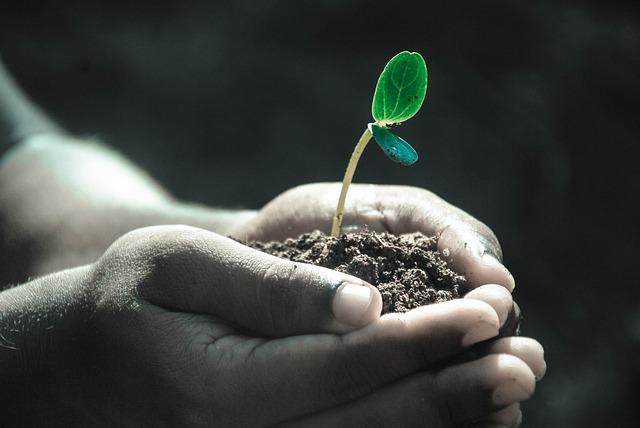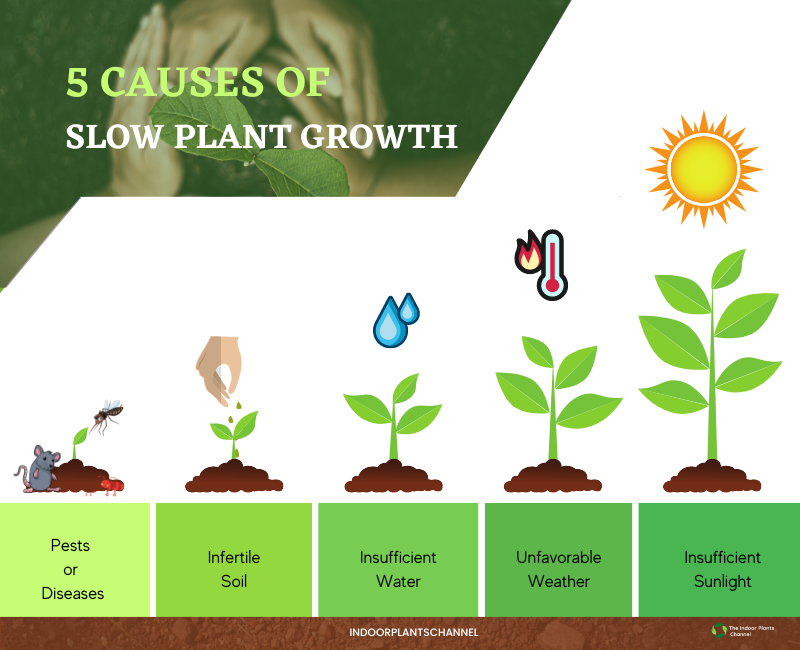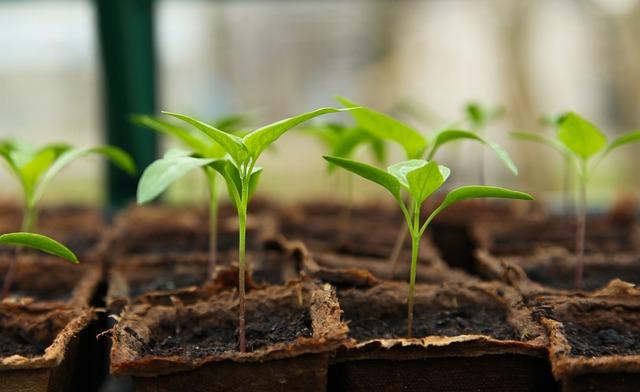It can be quite frustrating if your indoor plant isn’t growing as expected. What’s more frustrating is when you’re clueless about the problem with the plant. You don’t even know how to diagnose your Lily plant, for instance, but you could see that it’s not growing.

Fortunately, we’ve listed some of the common problems associated with the slow growth of plants, how to diagnose them, and the treatment. You’ll find detailed information in this blog post.
Thus, keep reading!
How To Diagnose Slow Plant Growth
- Check the leaves for signs of pests or disease.
- Inspect the roots for signs of damage or disease.
- Check the soil moisture level.
- Check the soil pH level.
- Check for nutrient deficiencies.
Why Your Plants Are Growing Slowly
There are several reasons why your plants are growing slowly and they include:
- If your plants are growing slowly, it could be because they’re not getting enough sunlight. Make sure to place them in a spot where they’ll get at least six hours of sunlight per day.
- Another reason for slow plant growth could be that the soil isn’t fertile enough. To help your plants grow faster, mix in some organic matter like compost or manure.
- It’s also possible that your plants are being attacked by pests or diseases. Inspect them regularly and treat them accordingly if you notice any problems.
- It could also be that the temperature is too hot or too cold for your plants. Check to see if the temperature is within the ideal range for your plants.
- Another reason your plants may be growing slowly is that they are not getting enough water. Make sure you are watering them regularly and deeply.
Sometimes, slow plant growth is simply due to the plant variety. Some plants naturally grow more slowly than others.

How To Treat Slow Plant Growth
If your plants are growing slowly, there are a few things you can do to help them along.
- Make sure they are getting enough light.
- Give them some extra nutrients.
- Make sure they are getting enough water. Check for pests.
- Check the soil fertility.
Bonus Tips
- Check the plant’s soil moisture levels regularly and water as needed.
- Apply a slow-release fertilizer once every two to three months.
- Place the plant in a bright, indirect sunlight location.
- Prune the plant as needed to remove any dead or dying leaves or stems.
- Inspect the plant regularly for pests and treat accordingly if any are found.
Frequently Asked Questions
- What are some common reasons why plants might grow slowly?
There are several reasons why plants might grow slowly. One reason might be that the plant is not getting enough sunlight. Another reason might be that the plant is not getting enough water or nutrients.
- How can I tell if my plant is not getting enough sunlight?
If your plant is not getting enough sunlight, it will likely be pale in color and have small leaves.
- How can I tell if my plant is not getting enough water?
If your plant is not getting enough water, the leaves will likely be wilted and the stem will likely be droopy.
- How can I tell if my plant is not getting enough nutrients?
If your plant is not getting enough nutrients, the leaves will likely be yellow or pale in color.
- What can I do to help my plant grow faster?
There are several things you can do to help your plant grow faster. One thing you can do is to make sure that the plant is getting enough sunlight. You should also make sure the plant is getting enough water.
Conclusion
Slow-growing plants can be a bit of a mystery. There are a number of different things that can cause slow growth, and it can be hard to figure out what is causing the problem. However, there are a few things you can do to try to fix the issue. You can check them out in the post above. With a little patience, your slow-growing plant may just surprise you and reach its full potential.
Michelle Wilde
Related posts
![]()
About Michelle Wilde
Michelle Wilde is a stay-at-home mom and avid plant lover. Armed with a post-graduate degree in Computer Science (no kidding!), she loves researching plants and landscapes. When she is not caring for her 4 kids, she spends time on her passion for plants. She blogs at www.indoorplantschannel.com, the trusted source for indoor plants.
Learn more
Subscribe
* You will receive the latest posts and updates about indoor plants!
Search
Recent Posts
Categories
- Beginner Guides (10)
- FAQ (206)
- General (2)
- How-To Guides (212)
- Indoor Plants (214)
- Pest Management (2)
- Plant Problem Solutions (4)
- Seasonal Growing (2)
- Specialized Environments (2)
- Specific Plant Care (3)
- Technical Growing (2)
